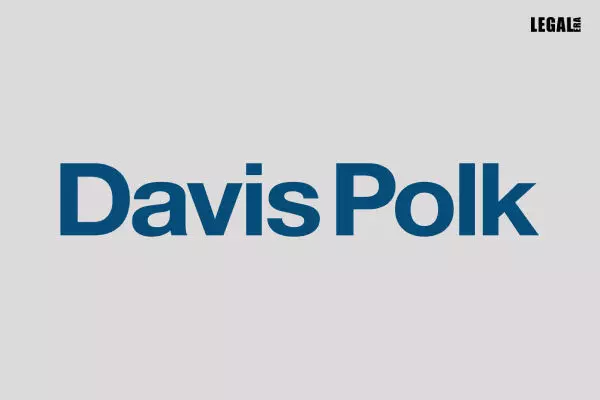- Home
- News
- Articles+
- Aerospace
- AI
- Agriculture
- Alternate Dispute Resolution
- Arbitration & Mediation
- Banking and Finance
- Bankruptcy
- Book Review
- Bribery & Corruption
- Commercial Litigation
- Competition Law
- Conference Reports
- Consumer Products
- Contract
- Corporate Governance
- Corporate Law
- Covid-19
- Cryptocurrency
- Cybersecurity
- Data Protection
- Defence
- Digital Economy
- E-commerce
- Employment Law
- Energy and Natural Resources
- Entertainment and Sports Law
- Environmental Law
- ESG
- FDI
- Food and Beverage
- Gaming
- Health Care
- IBC Diaries
- In Focus
- Inclusion & Diversity
- Insurance Law
- Intellectual Property
- International Law
- IP & Tech Era
- Know the Law
- Labour Laws
- Law & Policy and Regulation
- Litigation
- Litigation Funding
- Manufacturing
- Mergers & Acquisitions
- NFTs
- Privacy
- Private Equity
- Project Finance
- Real Estate
- Risk and Compliance
- Student Corner
- Take On Board
- Tax
- Technology Media and Telecom
- Tributes
- Viewpoint
- Zoom In
- Law Firms
- In-House
- Rankings
- E-Magazine
- Legal Era TV
- Events
- News
- Articles
- Aerospace
- AI
- Agriculture
- Alternate Dispute Resolution
- Arbitration & Mediation
- Banking and Finance
- Bankruptcy
- Book Review
- Bribery & Corruption
- Commercial Litigation
- Competition Law
- Conference Reports
- Consumer Products
- Contract
- Corporate Governance
- Corporate Law
- Covid-19
- Cryptocurrency
- Cybersecurity
- Data Protection
- Defence
- Digital Economy
- E-commerce
- Employment Law
- Energy and Natural Resources
- Entertainment and Sports Law
- Environmental Law
- ESG
- FDI
- Food and Beverage
- Gaming
- Health Care
- IBC Diaries
- In Focus
- Inclusion & Diversity
- Insurance Law
- Intellectual Property
- International Law
- IP & Tech Era
- Know the Law
- Labour Laws
- Law & Policy and Regulation
- Litigation
- Litigation Funding
- Manufacturing
- Mergers & Acquisitions
- NFTs
- Privacy
- Private Equity
- Project Finance
- Real Estate
- Risk and Compliance
- Student Corner
- Take On Board
- Tax
- Technology Media and Telecom
- Tributes
- Viewpoint
- Zoom In
- Law Firms
- In-House
- Rankings
- E-Magazine
- Legal Era TV
- Events
Paul Scrivano joins Davis Polk & Wardwell

Paul Scrivano joins Davis Polk & Wardwell
He is the latest partner to join the firm after it ditched the pure lockstep structure two years ago
Davis Polk & Wardwell has added the global mergers and acquisitions practice leader Paul Scrivano of Ropes & Gray to its deal team in Northern California.
Scrivano has moved over to the Wall Street firm following a five-year stint at Ropes & Gray in New York. He will join the firm as a resident in Menlo Park while also maintaining a practice in New York.
The managing partner at Davis Polk, Neil Barr, said, "Scrivano's arrival would solidify the firm's position as a "destination firm for big-ticket corporate transactions in Northern California. It is a key region for important growth sectors of the global economy, and thus a key market for mergers and acquisitions."
The firm said that Scrivano had advised on hundreds of US and cross-border mergers and acquisitions transactions and was widely recognized as an authority on the same. He has also worked on proxy contests, high-profile corporate governance matters, shareholder activism and takeover defense strategies.
Prior to landing at Ropes & Gray in 2017, Scrivano led O'Melveny & Myers' global mergers and acquisitions and private equity matters for 12 years. For two years, he was a partner at McDermott Will & Emery, having joined from Cravath Swaine & Moore in 2002.
The co-head of Davis Polk's Northern California office, Alan Denenberg characterized Scrivano as a "well-respected" figure in the US mergers and acquisitions market.
Denenberg stated, "Scrivano has significant experience leading major deals in a number of key sectors, including technology and life sciences. He will further strengthen our position as a go-to West Coast firm for important corporate transactions."
Scrivano's hire is the latest in a string of high-profile moves made by Davis Polk since it abandoned its pure lockstep structure two years ago. It was done for a more flexible structure that would allow it to remain competitive in the lateral hire market.


